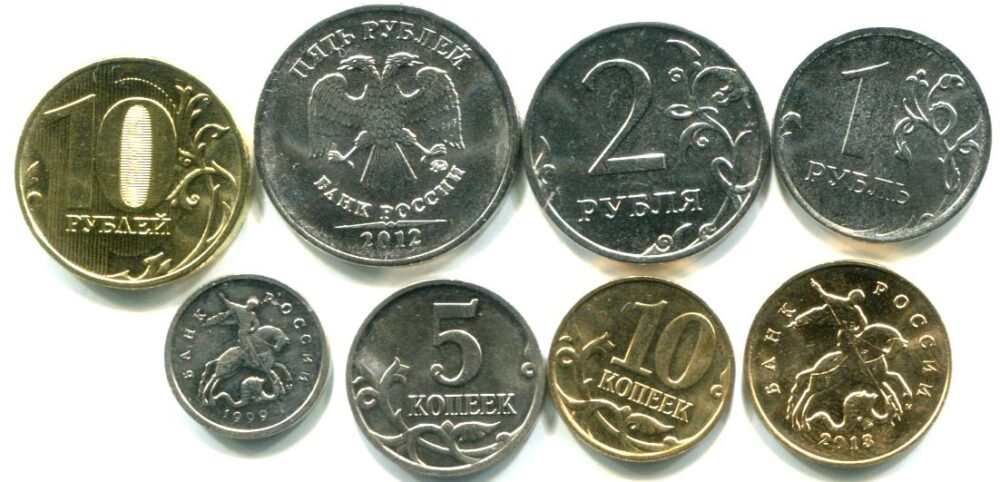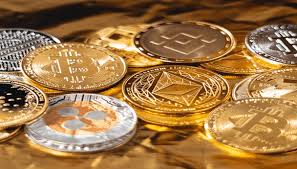Every year, the Bank of Russia puts into circulation several dozen types of silver and gold coins, which can be divided into two categories: investment and commemorative. Often, citizens consider them as one of the alternative and at the same time reliable tools for saving their money. However, when deciding to invest in coins made of precious metals, you need to remember some subtleties.
Investment coins are…
Coins whose main value lies in the value of the precious metal from which they are made.
For a long time, there were only two investment coins in Russia: the gold “Chevrolets” – an echo of the Soviet times (the last year of issue – 1982) and the silver “Sabol” minted in 1995.
In 2006, “George the Victorious” appeared with a face value of 50 rubles, made of gold. And in 2009, a silver version worth 3 rubles was added to it. Since then, almost every year the Bank of Russia has minted such coins. But “Chevrolets” and “Sabol” also retain the status of investment coins, despite the fact that new circulations have not been produced for a long time.
Investment coins are issued in hundreds of thousands and even millions of copies.
Commemorative coins are…
Coins, the issue of which is timed to coincide with important historical dates or significant events, or is dedicated to topical issues of culture, environmental protection, and other similar topics.
Commemorative coins made of precious metals have also been issued by the Bank of Russia since the early 1990s. Until 1995, in addition to gold and silver, platinum and palladium coins were minted. But for more than 25 years,
the case has been limited to the two main precious metals. Unlike investment coins, commemorative coins are valuable not only and not so much for the metal from which they are made. First of all, they are a collectible rarity, since they are produced in very limited editions (usually several thousand or even hundreds of pieces). In addition, commemorative coins have a proof quality: a mirror field and a matte relief image and inscriptions. This also affects their cost.
What coins are the most valuable?
Numismatists consider five-kilogram 500 rubles from the series “200th Anniversary of Russia’s Victory in the Patriotic War of 1812” to be the most expensive silver commemorative coin of Russia. If we take the weight of the metal, then its price today is about 330 thousand rubles. However, given that only 50 copies were produced, the market value is estimated at 1 million rubles or more.
As for the most expensive gold coin in modern Russia, it can also be considered a five-kilogram coin with a face value of 50 thousand rubles, issued in 2016 and dedicated to the 175th anniversary of the savings business in Russia. Its circulation was only 15 copies.
The price of gold alone, from which it is cast, at the current rate is more than 22 million rubles. Such coins do not appear in free sale, therefore it is impossible to estimate their real value, experts call both 50 million and 100 million rubles.
Can bullion coins also be commemorative?
Although commemorative coins are usually issued for special events, there are exceptions. In 2011-2013, special “Olympic” series of investment coins made of silver and gold were issued with the image of the symbols of the Sochi Olympics. Their characteristic feature was the shape: the coins were not round, but rectangular, resembling ingots.
And in 2016, two coins dedicated to the 2018 FIFA World Cup were issued. This time they were minted in the classical form.
Why buy?
The cost of investment coins is very close to the value of the metal from which they are made (plus an extra charge, which is set by the seller’s bank). Therefore, they grow (or fall) in price along with market quotations of metals on world exchanges.
With a steady rise in gold, such investments will be profitable with a multi-year perspective. For example, the sale price of the gold “George” in February 2006 was 4.28 thousand rubles, and now – 36.7 thousand rubles. Silver “George” in January 2009 cost about 500 rubles, and now – 2.5 thousand.
As for commemorative coins, their value is weakly dependent on metal prices. Much more important is the circulation or suddenly revealed features of a particular issue. Therefore, coin prices can change unpredictably. But in any case, they almost never become cheaper.
How to buy?
Both investment and commemorative coins can be bought at most commercial banks. Each bank sets its own price for coins, so it makes sense to study several offers in order to choose the best one.
They can also be purchased at numismatic stores or from private sellers. But in this case, it is better to play it safe and bring a knowledgeable person to help, so as not to become a victim of fraud by purchasing a coin at an inflated price.
How to sell?
Selling is more difficult than buying. Firstly, not all banks, even those selling coins, buy them back from citizens. Secondly, those credit organizations that nevertheless accept them from the population do so at a price much lower than they sell themselves. The difference in some banks can reach up to 70%.
In addition, if a citizen decides to sell a coin earlier than three years after the purchase, he will also have to pay 13% personal income tax.
You can sell coins to collectors. But here, too, it is necessary to exercise caution and not make deals if something in a potential buyer is suspicious.
In addition to coins, you can also consider the option of purchasing a precious metal ingot. But such an investment seems to be even more long-term. The fact is that when buying an ingot, the buyer must pay 20% VAT. In addition, the value of an ingot is significantly affected by its condition, and any slightest scratch greatly devalues it.





